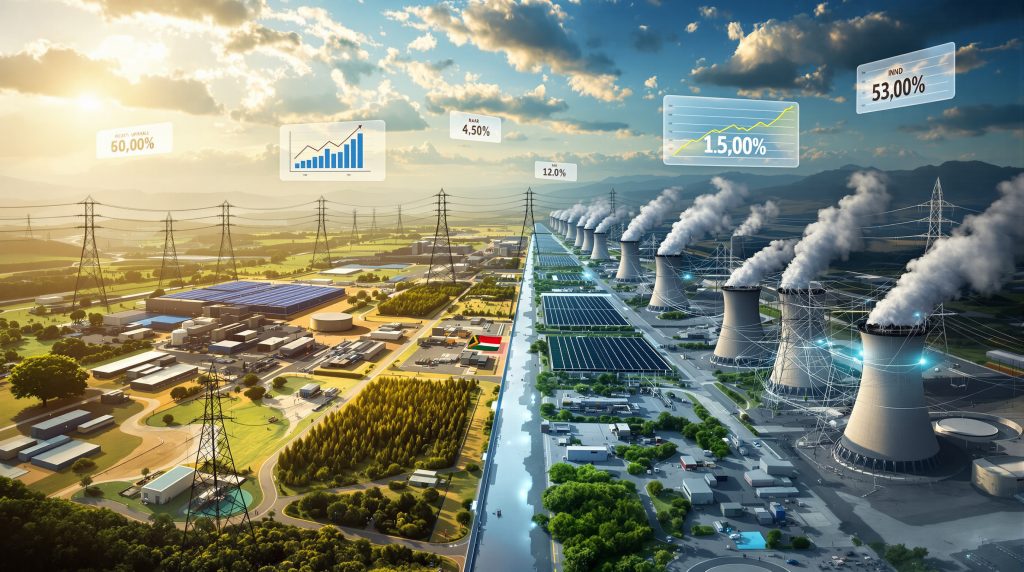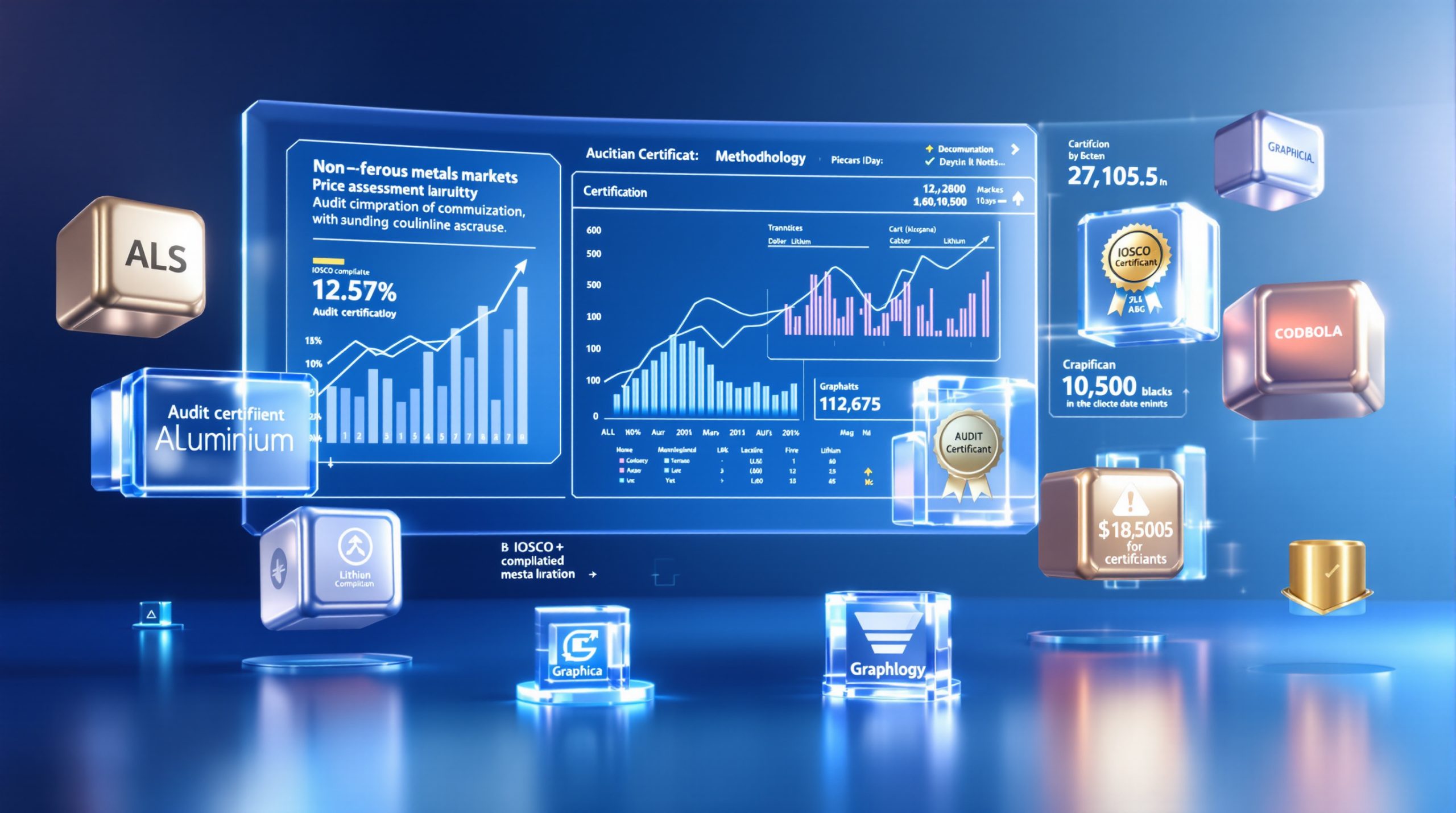Why Are Power Reliability and Affordability Critical Issues?
The reliability and affordability of power represent two fundamental pillars of energy policy that often exist in tension with each other. Reliable electricity requires substantial infrastructure investment and maintenance, while affordability demands cost containment. This relationship creates complex challenges for policymakers, industries, and consumers alike.
For energy-intensive industries like mining and manufacturing, this tension becomes particularly acute. These sectors depend on consistent, high-quality power to maintain operations and remain globally competitive. When either reliability or affordability falters, the economic consequences can be severe and far-reaching.
The Interconnected Relationship
Power reliability and affordability are inextricably linked in complex ways. Investments in grid infrastructure, generation capacity, and system redundancy improve reliability but often drive up costs in the short term. Conversely, cutting corners on infrastructure investment may keep prices lower temporarily but leads to deteriorating system performance and eventual reliability crises.
This relationship creates a delicate balancing act for utilities, regulators, and policymakers. The challenge lies in finding the optimal point where reliability meets affordability—providing sufficient quality of service without imposing unsustainable costs on consumers and businesses.
South Africa's experience demonstrates this challenge clearly. Electricity prices have increased by approximately 900% over little more than a decade, dramatically altering the competitive landscape for energy-intensive industries. This steep price escalation has contributed directly to the decline of once-thriving sectors like ferrochrome production.
Case Study: Industrial Energy Challenges in South Africa
South Africa possesses more than 70% of the world's known chrome resources and dominates global chrome sales. According to South African Revenue Service data, the country exported a record 20.5 million tonnes of chromium ores and concentrates in 2024, surpassing the 17.8 million tonnes exported in 2023.
The chrome sector has emerged as the fourth-largest mining sector by revenue, generating R63 billion in 2024 and directly employing nearly 26,000 people. However, this success story at the mining level contrasts sharply with the decline in downstream processing.
Despite resource abundance, South Africa's ferrochrome production has plummeted from 15 million tonnes in 2016 (representing more than half of global supply) to less than 4 million tonnes by 2024. This decline directly correlates with escalating electricity costs and reliability challenges that have eroded the competitiveness of local smelters.
The consequences extend beyond direct job losses at processing facilities. The contraction of energy-intensive processing industries creates significant ripple effects throughout the economy, affecting supply chains, tax revenues, and community livelihoods.
What Factors Drive Power Reliability Challenges?
Reliable electricity supply depends on multiple interconnected factors that extend from generation through transmission to distribution. Understanding these drivers helps identify potential solutions to enhance system performance without unsustainable cost increases.
Infrastructure Investment Requirements
Aging power infrastructure represents one of the most significant challenges to reliability. Many countries, including South Africa, operate generation, transmission, and distribution assets that have exceeded their design lifespans. This aging infrastructure becomes increasingly prone to failures, requiring more frequent maintenance and ultimately raising costs.
The investment required to modernize electricity systems is substantial. Beyond replacing aging equipment, new investments must also address:
- Weather resilience improvements to withstand increasingly severe climate events
- Cybersecurity enhancements to protect critical infrastructure
- Smart grid technologies that enable more efficient system management
- Transmission capacity expansions to reduce congestion and system constraints
Each of these infrastructure needs carries significant costs that must ultimately be recovered through electricity rates or taxpayer funding. Finding sustainable financing mechanisms represents a key challenge for maintaining system reliability.
Generation Mix Considerations
The composition of electricity generation sources significantly impacts both reliability and affordability. Traditional baseload power plants (coal, nuclear, large hydroelectric) provide consistent, predictable output but often face economic challenges from newer technologies.
Renewable energy sources like solar and wind offer increasingly competitive costs but introduce variability that must be managed through energy storage investments. Furthermore, successful integration requires:
- Flexible generation capacity
- Enhanced forecasting capabilities
- Demand response programs
- Expanded transmission interconnections
Balancing these different generation types to maintain reliability while controlling costs requires sophisticated system planning and operation. Countries that successfully navigate this transition can potentially improve both reliability and affordability, but the path is technically challenging.
How Do Electricity Costs Impact Industrial Competitiveness?
For energy-intensive industries, electricity costs can make or break global competitiveness. These industries often operate in highly competitive international markets where even small cost differentials can determine market share and profitability.
Production Cost Structure Analysis
In energy-intensive processes like ferrochrome production, electricity can represent up to 50% of total production costs. This cost structure makes these industries particularly vulnerable to electricity price increases and reliability issues that disrupt production.
When electricity costs rise significantly, as they have in South Africa, energy-intensive industries face difficult choices:
- Absorb the higher costs, reducing profitability
- Pass costs to customers, risking loss of market share
- Invest in efficiency improvements or self-generation
- Reduce production or shut down entirely
- Relocate to regions with lower energy costs
For South Africa's ferrochrome industry, the dramatic electricity price increases have made production economically unviable in many cases, leading to shuttered plants and lost jobs despite abundant access to chrome resources.
Global Market Positioning
International competitiveness in energy-intensive industries hinges significantly on electricity costs. The South African ferrochrome industry demonstrates this reality starkly—producers currently face electricity costs up to three times higher than their Chinese competitors, despite paying approximately 50% less for chrome inputs.
This cost differential explains why China has overtaken South Africa in ferrochrome production despite needing to import chrome ore from South Africa. The economics simply favor producing ferrochrome closer to the stainless steel manufacturing facilities in China, using imported South African chrome, rather than producing ferrochrome in South Africa.
Industry analyses suggest that ferrochrome smelters would require a minimum 40% discount on electricity tariffs just to break even and remain globally competitive. Moreover, annual tariff increases that exceed inflation would erode this competitiveness within 2-3 years, highlighting the need for long-term solutions rather than temporary fixes.
What Policy Solutions Can Address Both Reliability and Affordability?
Addressing the twin challenges of reliability and affordability requires a multifaceted approach that balances short-term needs with long-term sustainability. Several policy approaches have shown promise in different contexts.
Targeted Energy Pricing Mechanisms
Specialized electricity tariff structures for energy-intensive industries represent one potential intervention. These can include:
- Time-of-use rates that incentivize consumption during low-demand periods
- Interruptible load programs that provide discounts for allowing occasional service curtailments
- Industrial development rates designed to support strategic sectors
- Long-term power purchase agreements with price stability mechanisms
However, these preferential rates must be carefully designed to avoid simply shifting costs to other consumers or sectors of the economy. The mechanism to provide preferential electricity pricing for smelters in South Africa remains unclear, but it would ultimately require subsidization elsewhere in an already strained economy where businesses and households struggle with high energy costs.
Any tariff design must balance industrial competitiveness with broader economic impacts and social equity considerations. Transparent, economically sound mechanisms that create mutual benefits are more sustainable than hidden cross-subsidies.
Energy Mix Diversification
Expanding the energy generation mix to include more renewable sources can help stabilize long-term electricity costs by reducing exposure to fuel price volatility. Renewable energy technologies, particularly utility-scale solar and wind, have experienced dramatic cost reductions over the past decade and now frequently represent the lowest-cost options for new electricity generation capacity.
However, integrating variable generation sources presents energy transition challenges that require complementary investments:
- Energy storage systems to shift production to periods of higher demand
- Flexible backup generation that can respond quickly to supply fluctuations
- Enhanced grid management systems and forecasting capabilities
- Demand response programs that adjust consumption to match supply
- Transmission expansions to access diverse resource areas
Hybrid energy solutions that combine renewable generation with storage and flexible backup capacity can provide both reliability and affordability benefits, reducing exposure to natural gas price forecasts and volatility while maintaining supply security.
Regulatory Framework Optimization
Regulatory structures significantly impact both reliability and affordability. Traditional cost-of-service regulation often focuses on ensuring adequate infrastructure investment but may provide limited incentives for efficiency and innovation. Market-based approaches can drive cost reductions but may undervalue reliability if not properly designed.
Performance-based regulation offers a promising middle path, setting clear reliability standards while providing financial incentives for utilities to improve efficiency and reduce costs. This approach can align utility interests with broader policy goals of affordable, reliable service.
Key regulatory considerations include:
- Clear, consistent reliability standards with meaningful enforcement
- Transparent cost recovery mechanisms that encourage efficiency
- Incentives for innovation in both technology and business models
- Streamlined permitting processes for beneficial infrastructure
- Stakeholder engagement processes that balance diverse perspectives
Reforms that incentivize efficiency improvements while ensuring adequate investment in infrastructure maintenance and upgrades can help balance these competing priorities.
What Are the Challenges of Export Controls as an Industrial Policy Tool?
Export controls and taxes on raw materials are sometimes proposed as mechanisms to support domestic processing industries. In South Africa's case, export restrictions on chrome ore have been suggested as a way to encourage local ferrochrome production. However, these measures often produce unintended consequences that can harm the broader economy.
Limitations of Export Restrictions
Export controls face several significant limitations as policy tools:
- They reduce the competitiveness of mining operations by restricting market access
- They may violate international trade agreements and trigger retaliatory measures
- They artificially distort global markets, creating inefficiencies
- They potentially harm mining companies, their employees, and host communities
- They often fail to address the root causes of processing industry challenges
In South Africa's chrome sector, export restrictions would likely harm non-integrated chrome miners without substantially benefiting ferrochrome producers who already have secured chrome supplies. Many large ferrochrome producers have their own mines and long-term chrome supply agreements, meaning they are well-supplied and even export chrome themselves.
Any restriction would therefore not improve chrome supplies to smelters or revive shuttered plants. Instead, it would hit non-integrated chrome miners hard, affecting operations, export revenues, and related jobs.
Market Distortion Risks
Artificial market interventions frequently lead to distortions that reduce overall economic efficiency. These distortions can include:
- Suboptimal resource allocation as companies respond to policy rather than market signals
- Reduced investment in mining due to uncertainty and restricted markets
- Development of shadow markets that circumvent restrictions
- Downstream impacts on related industries and supply chains
- Potential for corruption or rent-seeking behavior
Despite South Africa being the biggest producer and exporter of chrome ore, the global market remains competitive. Chinese buyers can source chrome requirements from other countries if South African supplies become more expensive or restricted. The likely outcome is that local chrome exporters would have their production displaced and margins reduced, threatening business viability and jobs.
Alternative Policy Approaches
Rather than restricting exports, more effective industrial policy approaches might include:
- Targeted energy cost relief that addresses the fundamental competitiveness challenge
- Infrastructure investment to improve logistics and reduce operating costs
- Research and development support for more energy-efficient processing technologies
- Skills development programs to enhance workforce productivity
- Regulatory reforms that reduce compliance costs and administrative burdens
These approaches address the root causes of competitiveness challenges without creating market distortions or pitting different segments of the value chain against each other.
How Can Industries Adapt to Energy Challenges?
While policy solutions are essential for addressing systemic issues, individual companies and industries can also take proactive steps to manage energy challenges and improve their competitive position.
Energy Efficiency Investments
Energy efficiency improvements represent one of the most cost-effective approaches to addressing both reliability and affordability challenges. For energy-intensive industries, process optimization and efficiency upgrades can significantly reduce electricity consumption without affecting production output.
Key energy efficiency opportunities include:
- Process heat recovery and reuse systems
- Variable speed drives for motors and pumps
- Advanced process control systems that optimize energy use
- High-efficiency lighting and HVAC systems
- Building envelope improvements to reduce thermal losses
- Compressed air system optimization
These measures directly improve competitiveness by lowering operating costs while also reducing vulnerability to power supply disruptions. Energy efficiency investments typically offer attractive returns compared to supply-side alternatives, with the cost per kilowatt-hour saved through efficiency measures generally lower than the cost of generating additional electricity.
Self-Generation Options
Behind-the-meter generation solutions provide another pathway for energy-intensive industries to manage costs and improve reliability. Options include:
- Rooftop or ground-mounted solar PV systems
- Combined heat and power (cogeneration) plants
- Waste-to-energy facilities using process byproducts
- Biogas generation from organic waste streams
- Small-scale wind installations at suitable sites
- Battery storage systems for peak shaving and backup power
For ferrochrome producers and other energy-intensive industries, self-generation can provide both cost savings and improved supply security. While these systems typically require significant upfront capital, they can deliver long-term decarbonisation benefits that improve competitiveness.
Corporate renewable procurement strategies have evolved significantly, with options ranging from on-site generation to virtual power purchase agreements. These arrangements can provide price stability and potentially lower costs while also supporting energy transition and security goals.
FAQ: Power Reliability and Affordability
What metrics define power reliability for industrial users?
Industrial power reliability encompasses multiple dimensions:
- Frequency of outages (measured as System Average Interruption Frequency Index)
- Duration of outages (measured as System Average Interruption Duration Index)
- Voltage stability within specified parameters
- Frequency stability around the nominal system frequency
- Advance notice of planned outages for maintenance
- Restoration priority during system emergencies
For industrial processes, particularly those involving high temperatures or sensitive equipment, even momentary interruptions or quality issues can disrupt production processes and damage equipment, resulting in significant financial losses.
How do electricity costs compare across different markets?
Electricity prices vary significantly across countries due to differences in:
- Generation mix and fuel costs
- Regulatory structures and market design
- Infrastructure age and investment needs
- Policy priorities regarding subsidies and taxes
- Population density and geography
- Labor costs for utility operations
Energy-intensive industries typically locate in regions with competitive electricity prices, explaining the global shift in production patterns for sectors like ferrochrome. Countries with access to low-cost hydroelectric power (like Norway) or abundant fossil fuels (like certain Middle Eastern nations) often attract energy-intensive industries.
What role can energy storage play in improving both reliability and affordability?
Energy storage technologies can improve both reliability and affordability through multiple mechanisms:
- Storing electricity when generation costs are low and discharging during high-cost periods
- Providing backup power during outages to maintain critical operations
- Supporting grid stability by responding rapidly to supply-demand imbalances
- Enabling greater integration of low-cost renewable energy
- Reducing the need for peaking power plants that operate infrequently
- Deferring expensive transmission and distribution upgrades
As storage technology costs continue to decline, these systems are becoming increasingly viable for both grid-scale and behind-the-meter applications in industrial settings.
How do transmission constraints affect energy costs and reliability?
Transmission constraints impact both reliability and costs through several mechanisms:
- Limiting the ability to deliver power from generation sources to load centers
- Creating congestion that requires dispatching higher-cost local generation
- Reducing system flexibility to respond to contingencies and outages
- Constraining the integration of new, potentially lower-cost generation
- Increasing vulnerability to localized equipment failures
- Complicating maintenance scheduling and system operations
Investments in transmission infrastructure can alleviate these constraints, improving both reliability and access to lower-cost generation resources. However, these investments typically require long lead times for planning, permitting, and construction.
What policy approaches have proven most effective globally?
Successful policy approaches typically combine several elements:
- Competitive wholesale electricity markets with appropriate reliability standards
- Performance-based regulation of natural monopoly functions (transmission and distribution)
- Targeted programs to address affordable and reliable electricity
- Technology-neutral incentives for clean energy that allow market-based solutions
- Transparent, predictable regulatory processes that support long-term investment
- Robust stakeholder engagement that balances diverse perspectives
- Coordination between energy policy and industrial policy
Countries that have successfully balanced reliability and affordability typically take a holistic approach that recognizes the interconnections between different aspects of the energy system rather than addressing challenges in isolation.
Further Exploration:
Readers interested in learning more about the challenges of power reliability and affordability in industrial contexts can explore related educational content that examines how government assistance programs might address structural energy challenges. South Africa's experience with its chrome and ferrochrome industries offers valuable lessons for policymakers worldwide on balancing energy costs, reliability, and industrial competitiveness.
The mining and metals processing sectors provide particularly instructive case studies on how energy policies impact industrial competitiveness, employment, and broader economic development. As countries worldwide pursue clean energy transitions, these lessons become increasingly relevant for designing policies that support both decarbonization and industrial sustainability.
Want to Invest in the Next Major Mineral Discovery?
Discovery Alert's proprietary Discovery IQ model instantly alerts investors to significant ASX mineral discoveries, transforming complex mineral data into actionable insights for both short-term traders and long-term investors. Understand why historic discoveries can generate substantial returns by visiting Discovery Alert's dedicated discoveries page and begin your 30-day free trial today.




